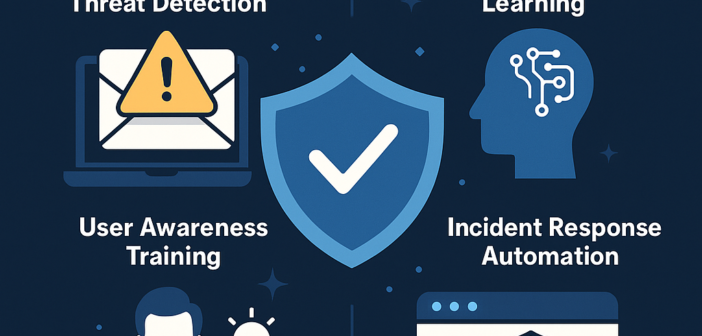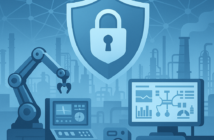In today’s rapidly evolving digital landscape, phishing attacks have emerged as one of the most significant cybersecurity threats. According to the Anti-Phishing Working Group (APWG), phishing attacks doubled between 2022 and 2024, with large enterprises becoming the primary targets1. Organizations with thousands of employees and complex IT infrastructures are especially vulnerable, making robust phishing protection tools essential.
This comprehensive guide explores the best phishing protection tools for large organizations, the key features to look for, and future trends shaping phishing defense strategies.
What is Phishing and Why Are Large Organizations at Risk?
Phishing is a type of cyberattack where attackers impersonate trusted entities to trick individuals into revealing sensitive data, such as login credentials, banking information, or corporate secrets.
Large organizations face unique risks because:
- They manage vast amounts of sensitive data.
- They have large, often globally distributed workforces.
- They use complex digital ecosystems that create more attack surfaces.
- They attract attackers due to their financial and reputational value.
Common phishing threats include:
- Business Email Compromise (BEC)
- Spear-phishing (targeted attacks)
- Whaling (targeting executives)
- Clone phishing (replicating legitimate emails)
Without proactive protection, a single phishing breach can cost millions and cause irreversible reputational damage.
Key Features of Effective Phishing Protection Tools
When choosing phishing protection for large organizations, it’s vital to focus on solutions offering:
- Real-Time Threat Detection: Immediate identification of phishing attempts.
- AI and Machine Learning: Intelligent pattern recognition beyond traditional signatures.
- Email Security Gateway: Advanced email filtering and authentication.
- User Awareness Training: Educating employees on recognizing and reporting phishing.
- Incident Response Automation: Rapid isolation and remediation.
- Threat Intelligence Integration: Access to up-to-date phishing threat databases.
- Multi-Channel Protection: Coverage across emails, SMS, social media, and collaboration tools (e.g., Slack, Teams).
Choosing a tool that integrates seamlessly with existing IT systems (Microsoft 365, Google Workspace, etc.) is also critical for large enterprises.
Top Phishing Protection Tools for Large Organizations
1. Proofpoint Email Protection
Proofpoint is consistently ranked as a leader in email security.
Features:
- Advanced threat protection with dynamic malware analysis.
- Impostor email detection and DMARC authentication.
- Security awareness training modules.
- Real-time threat intelligence.
Pros:
Robust threat detection accuracy; excellent user training modules.
Cons:
Higher cost for smaller organizations.
2. Microsoft Defender for Office 365
A native solution for enterprises using Microsoft 365.
Features:
- Phishing and malware protection in emails, links, and attachments.
- Automated incident response and investigation.
- Threat intelligence and attack simulation training.
Pros:
Seamless integration with Microsoft ecosystem.
Cons:
May require tuning to minimize false positives.
3. Cofense PhishMe
Focused heavily on human-driven phishing detection and response.
Features:
- Simulated phishing campaigns.
- Employee reporting and real-time threat detection.
- Triage and automation for phishing incident management.
Pros:
Strong user awareness training and quick threat containment.
Cons:
More focused on training than full perimeter defense.
4. Barracuda Sentinel
A cloud-native tool specializing in AI-driven phishing defense.
Features:
- Business email compromise (BEC) protection.
- Real-time spear phishing detection.
- Account takeover protection.
Pros:
Lightweight and easy to deploy.
Cons:
May require complementary endpoint protection.
5. IRONSCALES
Known for its self-learning email security platform.
Features:
- AI-powered inbox protection.
- Crowd-sourced threat intelligence from global users.
- Incident response automation.
Pros:
Rapid detection and remediation; minimal IT overhead.
Cons:
Smaller threat intelligence network compared to giants like Proofpoint.
Importance of Phishing Simulations and User Training
Even the best phishing protection technology cannot replace an educated workforce. User training remains one of the strongest defenses.
Key benefits of phishing simulations:
- Increased Employee Awareness: Recognizing phishing cues like suspicious links and requests for credentials.
- Reduced Click Rates: Studies show a 60% reduction in phishing susceptibility after consistent simulations2.
- Incident Reporting Culture: Encouraging employees to report suspicious emails rather than ignore them.
Recommended Training Tools:
- KnowBe4
- Cofense PhishMe
- Proofpoint Security Awareness Training
Simulated phishing campaigns should be varied, frequent, and reflect real-world threats to remain effective.
Future Trends in Phishing Protection
1. AI-Driven Adaptive Security
Newer platforms adapt protection strategies based on user behavior and emerging phishing trends. Predictive analysis will become standard.
2. Zero Trust Email Security
More organizations will adopt Zero Trust principles for email: trust no email, verify everything.
3. Deepfake and Voice Phishing (Vishing) Protection
With AI-generated deepfake audio becoming sophisticated, solutions like vishing protection will gain importance, particularly in protecting C-suite executives.
4. Cross-Channel Phishing Defense
Phishing isn’t limited to email anymore. SMS (smishing), social media, and collaboration tools are now targeted. Future tools will need to monitor multiple platforms simultaneously.
Best Practices for Large Organizations to Mitigate Phishing Risks
- Layered Security Approach: Combine email gateways, endpoint detection, and network monitoring.
- Implement DMARC, SPF, and DKIM: These authentication protocols significantly reduce email spoofing.
- Conduct Regular Risk Assessments: Phishing tactics evolve; regular audits ensure defenses remain current.
- Rapid Incident Response: Have playbooks and automation in place for quick containment.
- Executive Protection Programs: Train and secure executives who are high-value targets for whaling attacks.
- Continuous Monitoring and Analytics: Real-time monitoring allows quick detection and response.
Conclusion
Phishing remains the number one entry point for cyberattacks, especially in large organizations. Investing in cutting-edge phishing protection tools combined with continuous employee education is non-negotiable. As phishing attacks grow more sophisticated, enterprises must adopt a multi-layered, AI-driven defense strategy to stay resilient.
By integrating the right tools—like Proofpoint, Microsoft Defender, or IRONSCALES—along with fostering a culture of security awareness, large organizations can significantly lower their phishing risk and protect their brand, assets, and people.



